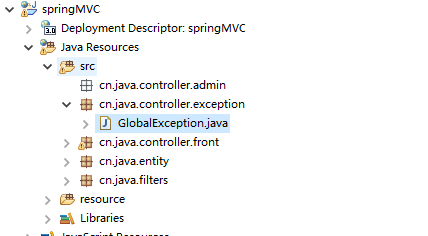SpringMVC带数据给jsp页面
第一种方式:通过request域
java:用HttpServletRequest request传值
request.setAttribute("user", username);
request.setAttribute("password", password);存值
@RequestMapping(value="test1") public String test1(String username,String password,HttpServletRequest request) { request.setAttribute("user", username); request.setAttribute("password", password); if("admin".equals(username)&&"123".equals(password)) { //登录成功 return "success"; } else { //登录失败 System.out.println(username); return "fail"; } }
取值:在跳转到的success.jsp页面中写: ${requestScope.user }
<%@ page language="java" contentType="text/html; charset=UTF-8" pageEncoding="UTF-8" isELIgnored="false"%> <% String basePath = request.getScheme()+"://"+request.getServerName()+":"+request.getServerPort() +request.getContextPath()+"/"; %> <!DOCTYPE html> <html> <head> <base href="<%=basePath %>"> <meta http-equiv="Content-Type" content="text/html; charset=UTF-8"> <title>new jsp</title> </head> <body> <h1>登录成功</h1> <!-- 通过request域保存数据 --> ${requestScope.user } </body> </html>
第二种方式:通过Model带数据
java中:用Model,
model.addAttribute("user",username);存值
@RequestMapping(value="test1") public String test1(String username,String passwor,Model model) { model.addAttribute("user",username); if("admin".equals(username)&&"123".equals(password)) { //登录成功 return "success"; } else { //登录失败 System.out.println(username); return "fail"; } }
取值和第一种方法一样,在跳转后的jsp页面:${requestScope.user }
Model就是把HTTPServletRequest封装了。
第三种方式:通过Map集合带数据
数据其实也是保存到request域中
@RequestMapping(value="test1") public String test1(String username,String password,Map<String, Object> map) { map.put("user1", username); if("admin".equals(username)&&"123".equals(password)) { //登录成功 return "success"; } else { //登录失败 System.out.println(username); return "fail"; } }
统一异常处理(*):
当一个页面出错了,要设置成跳转到一个专门的页面。
@RequestMapping(value="test1") public Integer test1() { int i = 10 / 0; return i; //这里会出错 } //异常处理注解,括号里代表以后是Exception的错误,统统自动找这个方法 @ExceptionHandler(Exception.class) public String excepHand(Exception ex) { ex.printStackTrace(); //把错误信息在控制台打印出来,前台的页面给用户看,项目快上线的时候都存到log4j中 return "error"; //跳到error.jsp页面 } //精确匹配:如果错误是ArithmeticException的,那么直接找这个方法,就不找上面那个方法了 @ExceptionHandler(ArithmeticException.class) public String excepHand2(Exception ex) { ex.printStackTrace(); //把错误信息在控制台打印出来,前台的页面给用户看,项目快上线的时候都存到log4j中 return "error"; //跳到error.jsp页面 }
但是在这个类中写,只适用于当前类,要是每个类都写一个太费资源。
因此创建一个包:cn.java.controller.exception,创建class:GlobalException
package cn.java.controller.exception; import org.springframework.web.bind.annotation.ControllerAdvice; import org.springframework.web.bind.annotation.ExceptionHandler; @ControllerAdvice //全局的,当前工程下任何错误异常都会找到这里来 public class GlobalException { @ExceptionHandler(Exception.class) public String excepHand(Exception ex) { ex.printStackTrace(); //把错误信息在控制台打印出来,前台的页面给用户看,项目快上线的时候都存到log4j中 return "error"; //跳到error.jsp页面 } }
有了这个,项目下任何错误都会进这个类。但是这个类必须在springmvc.xml能扫描到的范围内。
